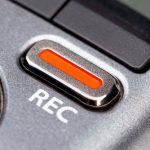 Recording equipment plays a vital role in courtroom proceedings and business meetings. These devices capture and preserve crucial information that may be used as evidence or for reference. To ensure the longevity and optimal performance of your recording equipment, proper storage is essential. In this guide, we will explore some best practices for storing recording equipment, specifically geared towards courtroom and business use.
Recording equipment plays a vital role in courtroom proceedings and business meetings. These devices capture and preserve crucial information that may be used as evidence or for reference. To ensure the longevity and optimal performance of your recording equipment, proper storage is essential. In this guide, we will explore some best practices for storing recording equipment, specifically geared towards courtroom and business use.
1. Clean and Prepare the Equipment
Before storing your recording equipment, it’s important to clean and prepare it properly. Use a soft, lint-free cloth to wipe down the exterior of the devices, removing any dust, dirt, or fingerprints. For microphones, ensure that the windshields or foam covers are clean and intact. Verify that all cables, batteries, and accessories are in good working condition and replace any worn-out components.
2. Choose an Ideal Storage Location
Selecting the right storage location is crucial for the longevity of your recording equipment. The area should be clean, dry, and well-ventilated. Avoid storing equipment in areas prone to temperature extremes, such as basements or attics, as these conditions can damage sensitive components. Choose a secure location with minimal exposure to dust, direct sunlight, and potential hazards that may pose a risk to the equipment.
3. Use Protective Cases and Covers
Investing in protective cases and covers is one of the most effective ways to safeguard your recording equipment. Hard or soft cases specifically designed for the size and shape of each device provide excellent protection against accidental drops, impact, and scratches. Consider using padded dividers or foam inserts within the case to prevent the equipment from moving and colliding during transport or storage. Additionally, utilize dust covers for your equipment when it’s not in use to minimize dust accumulation.
4. Organize and Label
Maintaining organization and labeling your equipment is essential to ensure easy identification and access. Designate specific areas for different types of devices and cables. Use shelves, racks, or storage containers to keep like items together and separate them from other equipment. Additionally, label each case or container with the contents inside, making it easy to locate the desired equipment quickly.
5. Protect and Store Cables Properly
Cables are essential components of recording equipment and can be particularly vulnerable to damage if not stored properly. Avoid coiling cables tightly or wrapping them around the devices. This can lead to kinks, twists, and damage to the wires, affecting the quality of your recordings. Instead, loosely coil the cables and secure them with Velcro ties or cable organizers to avoid tangles and damage. Store cables separately from the devices, preferably in labeled containers or cable bags.
6. Regularly Inspect and Maintain
Regular inspection and maintenance of your recording equipment are critical to ensure optimal performance and longevity. Periodically check for signs of wear and tear, loose connections, or malfunctioning components. Inspect cables for any fraying or damage. Clean the equipment’s inputs and outputs using compressed air or electronic contact cleaner to remove dust and debris. It’s also recommended to follow the manufacturer’s guidelines for any specific maintenance routines or firmware updates.
7. Implement Proper Handling and Transport Practices
Proper handling and transportation of recording equipment are essential to prevent damage, especially when transporting devices outside the courtroom or office environment. Utilize designated carrying cases or bags equipped with shock-absorbing padding for secure transportation. When setting up or dismantling the equipment, handle each piece with care, paying attention to delicate components such as microphones and connectors. Avoid placing heavy items on top of recording devices during storage or transport to prevent potential damage.
Summary
By following these guidelines for storing recording equipment, specifically geared towards courtroom and business use, you can ensure the longevity and optimal performance of your devices. Implementing proper cleaning and preparation, choosing an ideal storage location, utilizing protective cases and covers, organizing and labeling, protecting and storing cables properly, regularly inspecting and maintaining, and implementing proper handling and transport practices will help safeguard your equipment from damage and extend its lifespan. Remember, proper storage practices not only protect your investment but also ensure that your recording equipment is consistently reliable, allowing you to capture accurate and valuable information for your courtroom proceedings or business meetings.
Need Audio Documentation Equipment in Seattle, WA?
Welcome to Efficiency, Inc.! Efficiency, Inc. is a woman-owned and -operated voice processing solutions company in Seattle that services the Pacific Northwest. We offer courtroom recording and transcription equipment and software. We also offer dictation solutions that are available for single-hand or hands-free operation. Our audio and video solutions can also help with court and interview room recordings. Since 1954, we have been providing courtroom equipment as well as voice processing solutions for a wide spectrum of businesses and organizations. Our products use the latest technologies and come with on-site or remote support, installation, and training — all provided by your Efficiency team. Call us today!
